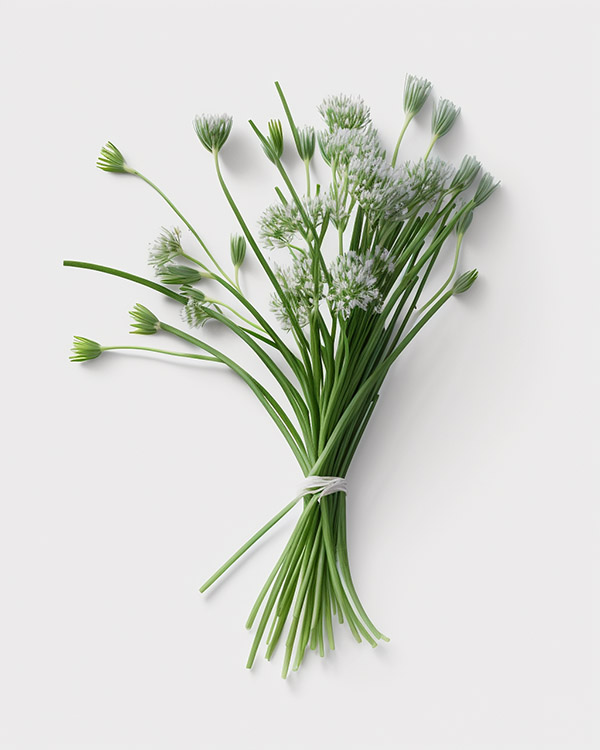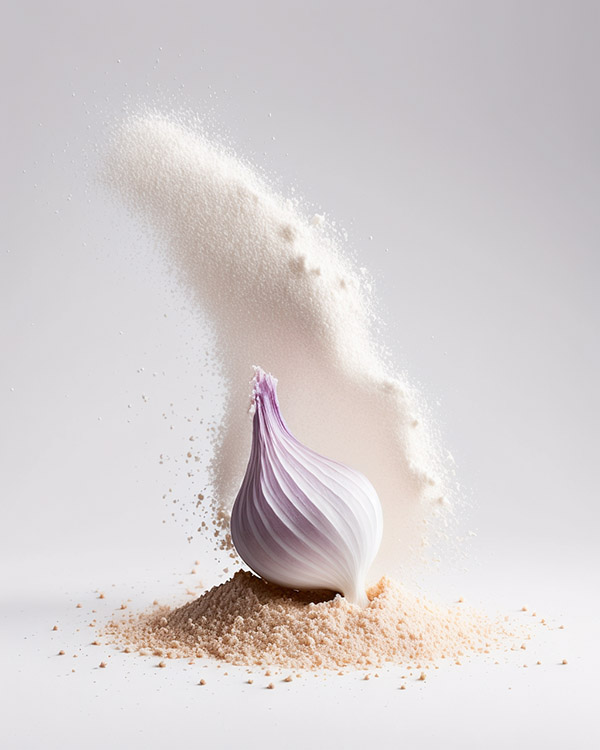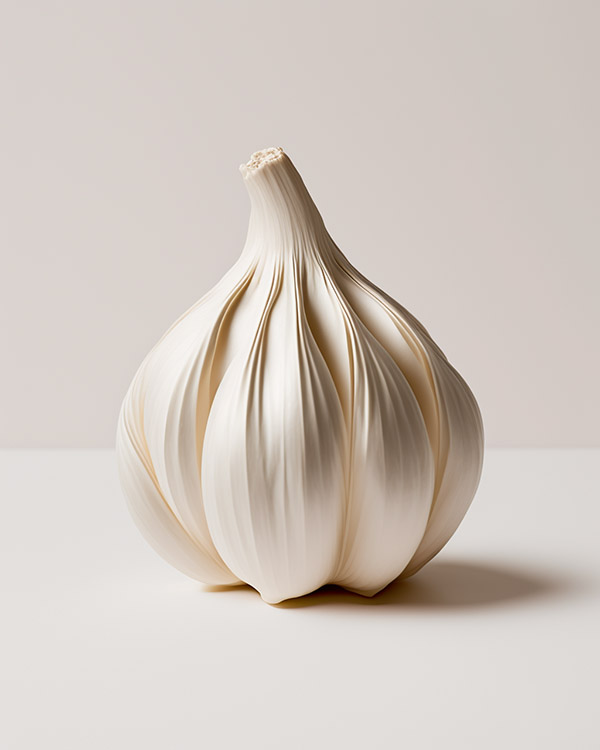The humble white onion is a staple ingredient in kitchens around the world, lending its pungent flavor and aroma to countless dishes.
However, there are times when dietary restrictions, personal preferences, or simple unavailability can lead you on a quest for the perfect white onion substitute.
This article aims to guide you through the fascinating world of alternatives, delving into the flavor profiles, textures, and culinary applications of these intriguing ingredients.
I’ve already touched a bit on the topic of onion interchangeability in an article on how to cut onions. Today let’s look at the detailed substitution of white onions
Contents
👅 Flavor Profile
White onions boast a sharp, pungent flavor with a hint of sweetness that mellows when cooked, making them suitable for a wide variety of dishes. They have a crisp texture when raw, which turns soft and tender when subjected to heat treatments like sautéing or caramelizing.
⚖️ Scale Conversion
Here’s a handy conversion table to help you determine the equivalent amounts of white onions in various forms.
It’s always great to have a kitchen scale handy for more accurate measurements. But if you don’t have one, use the envelope chart below.
| Size | Weight (grams) | Weight (ounces) | Chopped (cups) | Sliced (cups) | Onion Flakes | Onion Powder | Minced Dried Onion |
|---|---|---|---|---|---|---|---|
| Small | 70 – 100g | 2.5 – 3.5 oz | 1/3 cup | 1/2 cup | 1 tbsp | 1 tsp | 1 tbsp |
| Medium | 150 – 180g | 5.3 – 6.3 oz | 2/3 cup | 1 cup | 2 tbsp | 2 tsp | 3 tbsp |
| Large | 250 – 350g | 8.8 – 12.3 oz | 1 1/3 cups | 2 cups | 4 tbsp | 4 tsp | 5 tbsp |
🔄 Closest White Onions Substitutes

Yellow Onions
These versatile onions offer a similar flavor profile and texture to white onions, making them an excellent substitute in most recipes. Use a 1:1 ratio for substitution and expect a slightly sweeter flavor.

Shallots
With their mild, delicate flavor and hint of garlic, shallots can be a suitable substitute for white onions, especially in dishes where a subtle onion taste is desired. Use two to three medium shallots for one medium white onion, finely chopping them before adding to your dish.

Leeks
The tender, pale-green lower part of the leek is a fantastic substitute for white onions in cooked dishes. Use 1 ½ cups of chopped leeks for one medium white onion, making sure to wash the leeks thoroughly to remove any grit.
Leeks substitute ideas are here.

Red Onions
While red onions have a more robust flavor and a striking color, they can be used as a substitute for white onions when cooked. Use a 1:1 ratio for substitution and consider soaking them in cold water to mellow their flavor and reduce color bleeding.
Check for red onions substitutes.

Sweet Onions
These onions are known for their mild, sweet flavor and can be used as a substitute in dishes where a softer onion taste is preferred. Substitute one sweet onion for one medium white onion, adjusting the cooking time slightly as sweet onions can cook faster.
White onion vs Sweet Onion:
White onions pack a strong, spicy kick ideal for adding depth to dishes, while sweet onions offer a milder, sweeter flavor suitable for dishes where a gentler, caramelized taste is desired.
The two onions, while similar in appearance, offer distinct flavor profiles and can be used interchangeably depending on whether the dish calls for a strong, pungent kick or a subtle, sweet undertone.
Check for sweet onions substitutes.

Green Onions
Also known as scallions, these onions can be used as a substitute in raw applications or added towards the end of cooking.
Ratio
The substitution ratio of green onions (also known as scallions or spring onions) to white onions isn’t a straightforward one because they have distinct flavors and uses. If you need to use green onions in place of white onions, a general rule is to use a bunch (about six to eight stalks) of green onions to replace one medium white onion.
The white part of the green onion has a stronger flavor and can substitute the white onion better, while the green parts are milder and often used as a garnish. If your recipe calls for a significant amount of white onion, keep in mind that green onions are milder and may not provide the same depth of flavor.
⤵ More alternatives

Chives
Ideal for garnishes and uncooked recipes, chives can provide a mild onion flavor. Use one cup of chopped chives for one medium white onion, noting that their delicate texture will not hold up well to prolonged cooking.

Onion Powder
This concentrated onion flavoring can be used in a pinch as a white onion substitute. Use 1 tablespoon of onion powder for one medium white onion, adding it directly to your recipe.

Garlic
Although garlic has a distinct flavor, it can still be used as a substitute in some recipes, particularly those that call for sautéing or roasting. Substitute two to three cloves of minced garlic for one medium white onion, but be aware that the overall flavor of the dish will be more garlicky.

Fennel
Fennel’s mild anise flavor can provide an interesting twist as a white onion substitute, particularly in dishes where a slightly sweet and aromatic profile is desired. Use 1 ½ cups of chopped fennel for one medium white onion, keeping in mind the unique flavor it will bring to the dish.
🆚 Versus
White onion vs Sweet Onion
White onions, characterized by their white skin and flesh, have a strong, pungent flavor with a hint of sharpness. Their robust onion taste can be slightly bitter, and this intensity remains during cooking.
Sweet onions have a lighter, less opaque skin, and a slightly yellow or pale golden color. They provide a sweeter and milder flavor compared to white onions. This sweetness becomes more pronounced when caramelized.
Both types of onions soften and become translucent when cooked. However, sweet onions usually release more liquid due to their higher water content, which may affect the cooking time and texture of a dish.
The choice between these two depends on the specific flavor profile and texture required in a recipe. White onions are suitable for dishes where a pronounced onion flavor is needed, while sweet onions are ideal for dishes needing a more subtle, sweet onion note.
Are white onions sweet onions?
No, white onions and sweet onions are not the same. They are different varieties of onions.
Red vs White Onions
White and red onions, while similar in shape, exhibit different flavor profiles and culinary uses due to their unique properties.
White onions are known for their strong, sharp flavor, often displaying a touch of bitterness. This distinct taste retains its strength during cooking, making white onions a preferred choice in a wide array of dishes where a robust onion flavor is desirable.
Red onions, with their deep purple outer skin and layered white and purple flesh, offer a flavor that is comparatively milder and sweeter. These onions are also crunchier in texture, which, combined with their aesthetic appeal, makes them a popular choice for fresh uses such as in salads, sandwiches, or as a garnish.
In cooking, while both white and red onions can generally be used interchangeably, the choice ultimately hinges on the flavor outcome sought for the dish. The pungency of white onions is ideal when a prominent onion taste is needed, whereas red onions, with their milder and slightly sweeter flavor, work well in dishes that require a subtler onion presence or a pop of color.
🍳 Substitution by Meal Type
Curry
For curry, you can use yellow onions as they have a similar taste and texture to white onions, but are a bit milder. They work well in slow-cooked recipes like curry. Another option is shallots, which offer a subtly sweet and mild flavor that complements many curry dishes. Both can be substituted in equal amounts for white onions.
Salad
In salads, red onions are a great choice because of their milder flavor and eye-catching color. Alternatively, green onions (scallions) provide a gentler taste and can create a unique flavor profile. Both options can be used in the same quantity as white onions.
Indian Cooking
Shallots work well in Indian cuisine due to their mild flavor and subtle sweetness, which complement many Indian dishes. Red onions are another option because they have a slightly milder taste compared to white onions. Both substitutes can be used in equal amounts for white onions.
Meatloaf
For meatloaf, yellow onions are a suitable replacement as they have a comparable taste and texture to white onions and can withstand the cooking process. Leeks are another option, offering a mild onion flavor. Use the white and light green parts of leeks and substitute in the same quantity as white onions.
Chili
In chili, like chili with dark chocolate — yellow onions are a good choice because of their similar taste and texture to white onions. Alternatively, red onions can be used for a slightly milder flavor. Both options can be substituted in equal amounts for white onions.
Greek Salad
Red onions are popular in Greek salads due to their milder flavor and appealing color. Green onions can also be used as an alternative, creating a different flavor profile. Both substitutes can be used in the same quantity as white onions.
Stir Fry
For stir-fries, yellow onions work well because of their similar taste and texture to white onions. Red onions are another option, offering a slightly milder flavor. Both substitutes can be used in equal amounts for white onions.
🤧 Best White Onion Replacements to Reduce Onion Flavor
If you’re looking for alternatives to white onions that have a milder flavor, consider these options:
- Sweet onions (Vidalia, Maui, Walla Walla): These varieties have a sweeter, less potent flavor than regular white onions, making them a good substitute if you want to reduce the onion flavor.
- Leeks: The white and light green parts of leeks offer a milder, more delicate onion flavor.
- Scallions (Green Onions): These have a milder flavor, especially the green parts.
- Shallots: Shallots have a subtle flavor that’s a blend of mild onion and garlic.
- Chives: Chives provide a light onion taste and are usually used as a garnish or added at the end of cooking.
- Fennel Bulb: While it has a slightly sweet and anise-like flavor, it can be used for its crunchy texture and subtle sweetness.
- Celery or Celery root (Celeriac): They don’t taste like onion but can provide a savory note in dishes.
Remember, the best substitute will depend on the specific dish and how the onion is used within it.
💡 Tips and Guidance
- Combining Substitutes. To achieve a more similar taste to white onions, try combining different substitutes. For instance, use a mix of yellow onions and shallots to create a balanced flavor profile.
- Enhancing Flavor Profiles. Add complementary ingredients like celery, carrots, or bell peppers to enhance the flavor profile and add depth to your dish when using substitutes.
- Adjust Cooking Time. Be mindful of the cooking time when using substitutes, as some may require shorter or longer cooking times than white onions. For example, sweet onions tend to cook faster, while leeks may need a little extra time to soften.
- Texture Considerations. Some substitutes, like chives or green onions, have a more delicate texture than white onions. Adjust your recipe accordingly and add these ingredients towards the end of cooking to preserve their flavor and texture.
🧾 Conclusion
While white onions are a versatile and beloved ingredient in many kitchens, exploring the world of substitutes can open up new culinary possibilities and flavors.
Whether you’re dealing with dietary restrictions, personal preferences, or ingredient shortages, there are numerous alternatives available to suit your needs.
So go ahead, embark on a flavorful journey, and experiment with these exciting white onion substitutes to find the perfect balance of taste and texture in your next culinary creation.

